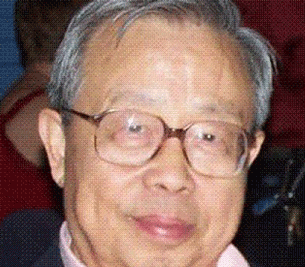




In late December 1986, student demonstrators were taking advantage of a Chinese leader’s talk about “democracy.”
There could be no modernization without democracy, declared then ruling Chinese Communist Party chief Hu Yaobang.
But could the students have been inspired by something more than calls for democracy as defined by a Party leader?
I later discovered that in several locations, an astrophysicist and vice rector of a provincial university was urging the students to think more independently.
I was a reporter in Beijing, but I had never heard of him before.
His name was Fang Lizhi.
Who was Fang Lizhi?

When Ruston told an inquiring crowd of students at People’s Square in the heart of Shanghai that he worked for VOA, the crowd began applauding, then cheering.
The students closely followed the two of us and peppered Ruston with questions.
The crowd grew larger, and Ruston decided that he had to make a run for it. It was impossible to do any more reporting. He himself had become the story.
Fang’s bold moves
Meanwhile, the Shanghai demonstrations had become part of the largest series of such events to occur since the abortive democracy movement of 1978-79, which was supported at first by Deng Xiaoping, China’s senior leader.
Deng subsequently crushed that movement when some of its leaders ended up criticizing Deng himself.
It was only later that I met Fang Lizhi for the first time.
Despite his expulsion from the Communist Party and a barrage of official criticism unleashed against him, Fang refused to be silenced.
In the summer of 1988, Fang and his wife, Li Shuxian, engaged university students in “democracy salons” that involved key student leaders.
Then, in January 1989, Fang made another bold move.
Fang, who had become known as “China’s Sakharov,” appealed directly to Deng to release the country’s political prisoners.
It was considered remarkable that he would address his appeal to Deng, something few Chinese would dare.
Reporting on Fang
When reporters spoke with Fang, he rarely went off the record. He didn’t pull his punches.
He spoke to me off the record only once that I recall. He said that he wanted to alert me to an important Communist Party document.
I was frequently followed by the state security police in those days, so I decided to visit Fang’s apartment after midnight.
In those days in Beijing, the streets were quiet after midnight, and I felt that I would not be followed if I drove out of my housing compound that late into the night.
One look at Fang’s simply furnished apartment told me that he had not benefited as some other Party members had from his privileged position.
He was no longer a member of the Communist Party but retained many friends who were. Like him, they were concerned about corruption and nepotism.
In June 1989 Fang and his wife were blamed for inspiring the pro-democracy movement and student-led demonstrations at Tiananmen Square. The demonstrations ended after the army sent tanks into Beijing on June 3.
After the two were placed on a wanted list, they sought refuge in the U.S. embassy in Beijing, where they stayed for a year before being allowed to leave the country.
An arrest warrant issued by the Beijing Municipal Public Security Bureau described Fang’s appearance, including his “slightly chubby” build and glasses worn to correct his nearsightedness.
Then in perhaps an unintended tribute to him, the warrant said that Fang “walks with erect gait and head uplilfted.”
After going into exile from China in 1990, Fang was active until the end of his life as a physics professor at the University of Arizona in Tucson.
Dan Southerland is RFA's Executive Editor.